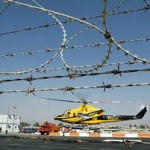Matches are held on Tuesday 1 / 64 Russian Cup 2011/2012 period. Penza Zenit on your lost Rusich of Eagle with a score of 1:2. In 1 / 32 finals on July 4 "Rusichi" play with the Vladimir Torpedo. Author: Herald
You are here : World News – Russian opinion» WORLD» "Rusichi" came out in 1 / 32 finals of the Cup of Russia
Recent Comments
Related Posts
Scientists have made a "living" transistor
Energy and information all designed by man power and ...
Two earthquakes with magnitude of about 4 occurred in Kamchatka
The epicenter of the first earthquake of magnitude 4 ...
OMB director: "We're not saying there's anything wrong with people earning a lot"
Jack Lew today couldn't say how an additional tax ...

Cyprus has started drilling on the shelf despite the threats of Turkey
The Republic of Cyprus began test ...
Hot Topics
Tags
Accident America and antiterror aviation Company Construction court Crime demonstrations and rallies Dmitry Medvedev ecology Economy Education election element Energy explosion family and children fires Government health Holidays Housing in Industry Internet law enforcement Libya Middle East Movies Music not president Progress Russia RUSSIA Sports Transport unrest war Weapons weather won WORLD
